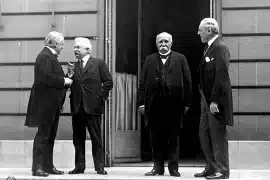Driving at night presents a set of challenges that many of us may not fully appreciate. The cloak of darkness brings reduced visibility, oncoming headlights that can be blinding, and an increased risk of fatigue. Let’s shed light on these challenges and discuss practical safety measures to make your night-time journeys safer and more comfortable.
The Challenges of Driving at Night
Reduced Visibility
One of the primary challenges of night-time driving is the reduced visibility.

The absence of natural light can make it harder to see the road ahead, especially on poorly lit streets. To tackle this, ensure your headlights are in top condition, and consider adjusting your driving speed to match the limited visibility.
Glare from Oncoming Headlights
Navigating the roads at night can sometimes feel like manoeuvring through a sea of headlights. The glare from oncoming vehicles can be intense, affecting your ability to see clearly. Combat this by focusing on the road markings, using your low beams when facing oncoming traffic, and looking slightly to the right to avoid direct glare.
Increased Risk of Fatigue
Night-time driving is notorious for its increased risk of fatigue. The combination of darkness and the body’s natural circadian rhythms can make you feel more tired than during daylight hours. To counter this, plan your trips with breaks, stay hydrated, and, if possible, share the driving responsibilities to stay alert and focused.
Strategies for Safer Night-time Driving
Driving Under the Speedlight
Many drivers treat the speed limit of a road as the target. But, you must drive to the road conditions, and if you’re not confident in the dark, drive slower. This can allow you to anticipate dangers and have more time to make decisions. There’s a reputation for boy racers coming out at night. You need to pay attention, and this is easier to do when you’re driving slower.
Use a Dashcam
Sometimes, safer night-time driving means being prepared for the worst. Using a dashcam can ensure that any accidents are captured and can be used as evidence against another driver. For example, many people ask: the other driver is denying that they hit my car ; what can I do to prove it? The answer is a dashcam.
Proper Use of Headlights
Your headlights are your lifeline at night. Use them effectively by keeping them clean and correctly aimed. When driving on unlit roads, switch to high beams, but be sure to dim them when approaching other vehicles to avoid blinding fellow drivers.
Maintaining a Safe Following Distance
Maintaining a safe following distance becomes even more critical at night. Judging distances can be challenging, so increase your following distance to allow for unexpected stops. This simple precaution can prevent rear-end collisions in low-visibility conditions.
Addressing Fatigue
If you’re feeling fatigued, it’s crucial to address it before hitting the road. Take short breaks to stretch and rest, stay hydrated , and consider a power nap if needed. Remember, your safety and the safety of others on the road depend on your alertness.
Utilising Road Markings and Signs
Road markings and signs are your guiding stars in the darkness. Stay within the lines and pay attention to signage to navigate safely. Reflective road paint and signs can be particularly helpful, so keep an eye out for them.
How to Drive Defensively
You understand the benefits of defensive driving. But, how can you start to implement this into your daily life? Thankfully, there are simple things you can do that can prove very beneficial on the road, avoiding dangerous crashes. Here are some simple ways to adopt defensive driving and that could keep your family safe.
Ensure There is a Safe Distance
It’s easy to drive close to the car in front of you. Perhaps they’re going under the speed limit, and you’re familiar with the road. But, it’s always advised that you leave a safe distance in case something goes wrong and they have to break suddenly. This gives you enough space to stop without hitting them. In particular, you want to keep a three-second following rule. This should be extended if the weather is bad. For example, this can include rain, snow and fog.
Drive Slower in Bad Weather
Even if you know the roads well, it’s best to slow down when there’s bad weather. For example, if it’s pouring rain, this is something that can cloud your vision and make breaking harder. So, if you’re travelling slower, you’re able to deal with problems on the road better. Therefore, consciously make the decision to slow down. You don’t always have to drive at the speed limit. Sometimes, this is too much for the road conditions.
Do Not Get Angry
When other drivers do something silly on the road, it’s very easy to get angry. However, you must not react when something happens. Getting angry can mean that you lack composure and you can end up doing dangerous manoeuvres too. Instead, try to dismiss the behaviour straight away and focus on yourself. Remember your destination and forget about it.
Always Check Your Blind Spot
While mirrors are great for looking for vehicles behind you, there’s one thing you can’t beat. That’s physically turning and looking over your shoulder. While you may think that there is space free, always check your blind spot before changing lanes. This is something that can avoid a crash and it only takes a few seconds to do.







